Gokyo Lakes Trek
Trip Facts
Trip Highlights
- Cross Renjo-la Pass is situated at an elevation of 5,340 meters above sea level.
- Breath-taking 360-degree views of three 8,000m above peaks.
- Cultural exploration and warm hospitality of the local sherpas.
- Trekking in the less crowded hiking trails of the Everest region.
- Explore some of the highest freshwater lakes and ancient monasteries throughout the trek.
- Cross one of the most beautiful passes, Renjo la pass.
Trip Overview
The Gokyo Lakes Trek is an exciting journey across Nepal's high alpine landscape. The Gokyo Lakes walk is one of the most well-known hikes in Nepal, and it can be found in the Khumbu region. If you want to see the Everest region of Nepal but prefer to avoid crowds, this is the route for you. The highest point of the Gokyo Valley hike is the Renjo la Pass, which is 5,340 meters above sea level, one of the high trekking passes of Nepal. The trailhead at Lukla is also a destination for hikers. In the meantime, you can take a breathtaking flight to and from Lukla and Kathmandu. Amazing aerial panoramas of towering mountain ranges await you on this journey. During the Gokyo Lakes journey in Nepal, you can witness some of the world's most impressive mountain ranges, including Everest, Lhotse, Cho Oyu, and Amadablam. The world's tallest freshwater lake system is also located here.
Gokyo lakes trek in Nepal is of moderate difficulty. Because of that, one who is physically and mentally fit can complete the trek easily. Besides that beginners with basic hiking experience can also go for the trek, however, some preparation and knowledge/research about the trek is necessary. The only difficult part of the Gokyo Lakes trek in Nepal is the Renjo la Pass. But no climbing skills and gears are required to cross the pass. Kathmandu sightseeing is the first day before your trek to Gokyo Lakes. During the sightseeing of Kathmandu valley, you can explore some of the UNESCO world heritage sites. Swayambhunath, Boudhanath, Pashupatinath, and Kathmandu Durbar Square are the four heritage sites that you will be exploring. You can also choose some other heritage sites that you are willing to visit during the day. Besides that, this day can also be used as a trek preparation day.
Your Gokyo Lakes trek starts after a scenic flight to Lukla Airport. During the flight, you can have marvelous views of the mountain ranges and the valleys. You can also witness Everest, Lhotse, Makalu, Cho Oyu, and many other mountain ranges during the 30-minute flight. Upon reaching Lukla you will meet the rest of the team and start walking. Monjo is the stop point on the first day of the trek which lies at an elevation of 2,835 meters above sea level. Besides that, you can also choose to stay overnight at Phakding village. During your trek to Namche Bazaar, you will pass through some of the rural villages and vintage gompas, and monasteries. The sherpa capital is the main highlight of the trek and you can also meet with other hikers or have a hike to nearby places during the acclimatization day. Dole lies at an elevation of 4,200 meters above sea level and is a stunning place that you can explore.
On the sixth day of the trek you will reach Gokyo Lakes and you can also take a hike to Gokyo Ri the next day. The best view of Gokyo 5 and Everest can be seen from Gokyo Ri. Renjo la Pass is the highest point of the Gokyo Lakes trek that lies at an elevation of 5,340 meters above sea level. After crossing this pass you can reach Lunde and then to Namche Bazaar. From there you will take the same route to reach Lukla and fly back to Kathmandu.
Gokyo Lakes - Stunning oligotrophic lake
Gokyo Lakes are the highest-altitude lakes that lie in the Khumbu region of Nepal. Altogether there are 19 lakes in the Gokyo Valley, but among them, six of the lakes are the major lakes. Among all the lakes, Thonak Lake is the largest. Similarly, The minimum elevation of Gokyo Lake is 4,700 meters above sea level and the highest elevation is 5,000 meters above sea level. Gokyo Lakes lie in the northeastern part of Nepal in the Solukhumbu district of Nepal.
Marvelous views of the Gokyo lakes as well as the mountain ranges can be seen from the top of the Gokyo Ri which lies at an elevation of 5,360 meters above sea level. Besides that, astonishing views of Everest can also be seen from the top of Gokyo Ri. Besides Gokyo village which lies at an elevation of 4,790 meters above sea level besides Goko lake, 3 is also the main highlight of the area.
Sagarmatha National Park
Sagarmatha National Park is the most popular national park of Nepal that lies in Province 1 of Nepal. Established on July 19, 1976, it covers an area of 1,148 square kilometers. Meanwhile, this national park was included in the UNESCO world heritage site in 1979. Besides being the home to rare species of flora and fauna, Sagarmatha National Park also holds some of the deep valleys, glaciers, and lakes as well as the 8 mountain ranges above 7,000 meters.
The warm hospitality of the sherpas is also a major thing to experience inside the Sagarmatha national park. Besides that, you can also learn the tradition and culture of the local Sherpas. Some of the most popular areas around the Sagarmatha National Park include the Namche Bazaar, Dingboche, Everest Base Camp, Kala Patthar, Gokyo Lakes, Gokyo Ri, and many more.
Renjo La Pass
Renjo la pass is the highest point of the Gokyo Lakes trek besides that it is also one of the major high trekking passes of Nepal. It lies at an elevation of 5,340 meters above sea level. Besides that, it is also one of the most challenging passes of the Everest region that lies north of Namche Bazaar. Besides that, you can also witness the marvelous views of the high mountain ranges and the deep valleys from the top of the pass.
You can reach Lunde village after crossing the Renjo La Pass from Gokyo Lakes. The alpine glacial views and snowy trails are the exciting part of this pass. Renjo La Pass is one of three major passes in the Everest region. But the scenarios, landscape, and sherpa culture are worth any difficulties during the trek. The trekking route to Renjo La Pass is less crowded than other trekking routes in the Everest Region. So it is a must place to try if you are willing to trek in the less crowded trekking route of the Everest region.
Best Time for Gokyo Lakes Trek
Gokyo Valley is one of the least crowded hiking trails in the Everest region of Nepal. Meanwhile, it is an ideal choice for adventure seekers who are willing to try the least crowded area of the same region. Due to the heavy rainfall in the Monsoon season of the year, it is better not to trek Gokyo Valley during this season of the year. Besides that, due to high snowfall, the winter season of the year is also not favorable for trekking.
March, April, and May are the best time for trekking in the Gokyo Lakes trek in Nepal. Meanwhile, during this season you can also witness the beautiful rhododendron flower blooming in the lower parts of the trek. Similarly, another best time for the Gokyo Valley trek is during September, October, and November. Due to high visibility, you can witness astonishing views of the mountain ranges during these months of the year.
Permits and Entry Fees
Before 2018 the trekkers traveling to Gokyo Valley need to pay for the TIMS card. But after 2018 the local government of the Pasang Lhamu Rural Municipality will replace the TIMS card. Instead of a TIMS card, you will need to get a Khumbu Pasang Lhamu Rural Municipality Permit. Meanwhile, you can get this pass only in Monjo or Namche. Similarly, the cost of a Khumbu Pasang Lhamu Rural Municipality Permit is Nrs 2,000 per person.
Another pass you will need during the Gokyo Lakes trek is the Sagarmatha National Park Permit. Almost all the trekking trails of the Gokyo valley lie inside the Sagarmatha National Park of Nepal. Because of that it is mandatory to get a Sagarmatha National Park Permit. You can get this pass from Kathmandu or Monjo. The cost of this permit is Nrs 3,000 per person (subject to change).
Difficulty Level
Gokyo Valley is a moderate to difficult level of trek that lies in the Khumbu region of Nepal. Almost all the treks in the Khumbu region are quite difficult as it lies at a high elevation. The trail to Gokyo Lake is not so difficult, but the trail to reach the Renjo la pass is one of the difficult parts of the trek. The altitude of the Renjo La Pass is 5,340 meters above sea level. Because of that, there are high chances of getting altitude sickness. Because of that, you will need to slowly gain altitude and acclimatize to avoid altitude sickness. But no technical climbing skills are required to cross the pass.
Daily 6-8 hours of walking is required to complete the trek in time. This trekking trail gets comparatively fewer travelers than the Everest base camp trek. But the trail is easily navigable as there are various sign boards throughout the trekking trails. Meanwhile, you will need to walk steep uphill as well as downhill on the rough trails of the Himalayas. Because of that, the hikers must be physically fit, and regular exercise a few weeks before the trek is a must.
Detailed Itinerary
Kathmandu Arrival.
Kathmandu Sightseeing and Trek Preparation.
Fly to Lukla, Trek to Monjo. [2,835m/9,301 ft]
Trek to Namche Bazaar. [3,440m/11,155 ft]
Acclimatization in Namche Bazaar.
Trek to Dole. [4,200m/13,780 ft]
Trek to Machhermo. [4,470m/14,666 ft]
Trek to Gokyo Lake.
Hike to Gokyo Ri.
Trek to Lunde via Renjo La Pass.
Trek to Namche Bazaar.
Trek to Lukla.
Fly to Kathmandu.
Departure.
Trip Guide
The information about the Gokyo Lakes Trek is in-depth; feel free to contact us 24/7. We will be available on WhatsApp to assist you instantly. You can write an email if this trip doesn't fit your vacation schedule and requirements. Altitude Himalaya aims to offer the best possible travel experience to customers. Depending on the needs of the visitors and the group size, we customize each vacation package. We will put together a bespoke itinerary just for your private group.
Travel Insurance: Travel insurance is important before traveling to a new place especially when you are traveling for adventure. Travel insurance covers risks such as loss of personal belongings, and any unexpected expenses. Travel insurance also covers sudden medical emergencies such as accidents. It also covers high-altitude emergency evacuation in case of trekking. Travel insurance is not compulsory but highly recommended.
Medical Emergency: If you face any serious medical emergency during your trekking program you will immediately evacuate the place through Helicopter Rescue which the traveler’s insurance company will cover. While trekking to the highland of Nepal you may face minor health issues such as scratches, headaches, etc. For such a situation, your guide carries a well-equipped first aid kit, ensuring nothing happens to you.
High-Altitude Sickness: During the Gokyo Lakes Trek you will walk through gorgeous valleys, traditional villages, and thrilling highlands above 3,000m elevation. Altitude sickness is unpredictable; it can happen to anyone despite being physically and mentally fit. As you gain altitude, the chances of getting altitude sickness also slightly increase. To avoid getting altitude sickness you should drink 5-6 lt water per/day and food with high carbohydrates. Walking slowly and acclimatizing decreases the chances of getting altitude sickness. Focus on your breathing and maintain your walking pace.
Packing List Suggestions: Having a good backpack and necessary gear makes trekking easier. It becomes more important if you are trekking at higher elevations. If you are wondering about what to pack for trekking to the Annapurna region, then you can check our complete guide on Nepal Trekking Gear Checklist. While making a backpack, it is important to include clothing, essential items, and a first aid kit. In difficult times, a good backpack can be life-saving.
Do’s and Don’t:
-
Select the ideal time to travel.
-
Select a reputed trekking/ travel organization.
-
Training and getting ready for any kind of situation are necessary.
-
Efficient packing is the key. (Nepal trekking gear checklist)
-
Carry all the necessary paperwork (ACAP, Restricted area permit, and TIMs card).
-
Maintaining body hydration is important while traveling to high elevations.
-
Having the proper personal gear makes your journey more enjoyable.
-
Ask for permission before taking pictures and videos of the locals.
-
Respect the culture and people of the area.
-
Travel for experience and not for the sake of traveling.
-
Don’t litter, put trash in its place.
Why with Altitude Himalaya: Altitude Himalaya is one of Nepal’s growing travel companies providing excellent service to its clients. We believe in providing quality experiences and memories. We are concerned about maintaining and following our own standard service that includes a private transfer, at least a 3-star hotel accommodation in urban areas, the best available lodges/tea houses at the trekking trails and dedicated personalized assistance. Additionally, we also operate our trips in Bhutan and Tibet.
Frequently Asked Questions
-
How high is Gokyo peak?
The Gokyo peak, also known as Gokyo Ri, sits atop an elevation of 5357 m. above sea level in Gokyo valley. The Gokyo peak offers a wide range of Himalayan vistas and spectacular beauty of mountain scenery.
-
How difficult it is to reach Gokyo Lakes?
Gokyo lakes trek is significantly difficult as it requires trekking in the higher elevations. If you are planning to trek in this area, having a guide and support person can drastically lower the difficulty and the experience can be better. The chances of altitude sickness are high while trekking in this area, so we suggest you to be prepared accordingly or consult for the possibilities to alleviate the risk of Acute mountain sickness.
-
Can I see the Mount Everest from Gokyo?
Yes, you can see marvelous views of Mount Everest from different parts during your Gokyo lakes trek. Meanwhile, the best view of Mount Everest can be seen from the top of the Gokyo Ri and the Renjo La Pass.
-
How many hours do you walk a day?
Although the Gokyo lakes trek is considered one of the toughest treks, you don’t have to walk for the entire day. The Everest region is located above 3000 and to avoid the risk of getting high altitude sickness you will walk just 5-7 hours a day while slowly acclimatizing on the way.
-
What kind of permits do I need for the Everest Base Camp trek?
For the Everest Base camp, you will mainly need two Everest base camp permits to step into the Everest region. You will need Khumbu Rural Municipality Permit and a Sagarmatha National Park entry permit.
-
What kind of clothes and equipment should I pack for the Gokyo Lakes trek?
For any travel, program packing is a very important part and one should pack efficiently. You will be caring for your baggage so make sure you only pack what you can carry. For more ideas about packing read Nepal trekking gear checklist.
-
Do we get facilities such as a hot shower, hot water, wifi during the trek?
Yes, you can get such facilities in the teahouses and local loges however, you will have to pay an extra amount for the services according to the teahouse policy as such facilities are not mentioned in the given cost.
-
What kind of food will I get during the trek program?
In Urban cities like Kathmandu, you will be served a variety of breakfast options. However, in the higher elevations during the trip, you will taste local cuisine which is mostly Thakali food and for breakfast limited options are available. Some of the available foods are eggs, fresh seasonal veggies, salads, apple pies, pancakes, Dalbhat, bread, soups, and meat (depending on availability) and in developed areas, you can try food from the A-la-carte menu and try a wide range of food options.
Services Includes
-
All arrivals and departures at Kathmandu airport as mentioned.
-
Flight (Kathmandu/Lukla/Kathmandu) transfer as mentioned in the itinerary.
-
A 3 Star hotel accommodation in Kathmandu as per the trek itinerary.
-
Daily breakfast throughout the trip.
-
Lunch and Dinner from trek start day to trek end day.
-
All necessary paperwork. (National Park Entry Permits, Khumbu rural municipality, and TIMS Card)
-
English-speaking licensed trek guide.
-
Porter during the trek. (Can carry 20KG Baggage of 2 people)
-
Lodge or Tea house accommodation during the trek.
-
One local SIM card (returnable) during your stay.
-
All government and local taxes.
-
Guide and Porter’s salary, food, and accommodation during the trek.
-
Arrangement of emergency helicopter service which will be paid for by your traveler’s insurance company.
-
Sleeping bags, duffle bags, and trekking route maps – if necessary.
-
Farewell Nepali dinner on your last night.
Services Excludes
-
Personal expenses.
-
Kathmandu sightseeing entrance fee.
-
Lunch and dinner in Kathmandu.
-
Nepal visa cost. (You will require 2 passport size photos and 30 USD)
-
International flight ticket.
-
Travel health insurance. (Recommended)
-
Tips for the guide, porter and driver.
-
Sweet things like dessert/chocolate.
-
All alcoholic and non-alcoholic drinks.
Why Travel With Altitude Himalaya?
We believe in the quality services to accommodate our guests 360 degrees need with tour personalization and customization. Our dedicated and experienced team believes not only in arranging trips, but making creating life long memories. Our travel experience within the region of Nepal, Bhutan and Tibet could make a memorable trip of yours.
Confirm Your reservation Now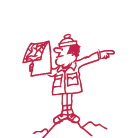

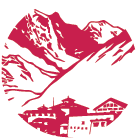
TALK TO AN EXPERT
we can help you find your perfect holiday
Mr. Kiran has experience of 10+ years in tourism across Nepal, Bhutan and Tibet holiday arrangements to thousands of travellers from around the world. He will help you to figure out the best possible vacation plan according to your choice and preference.



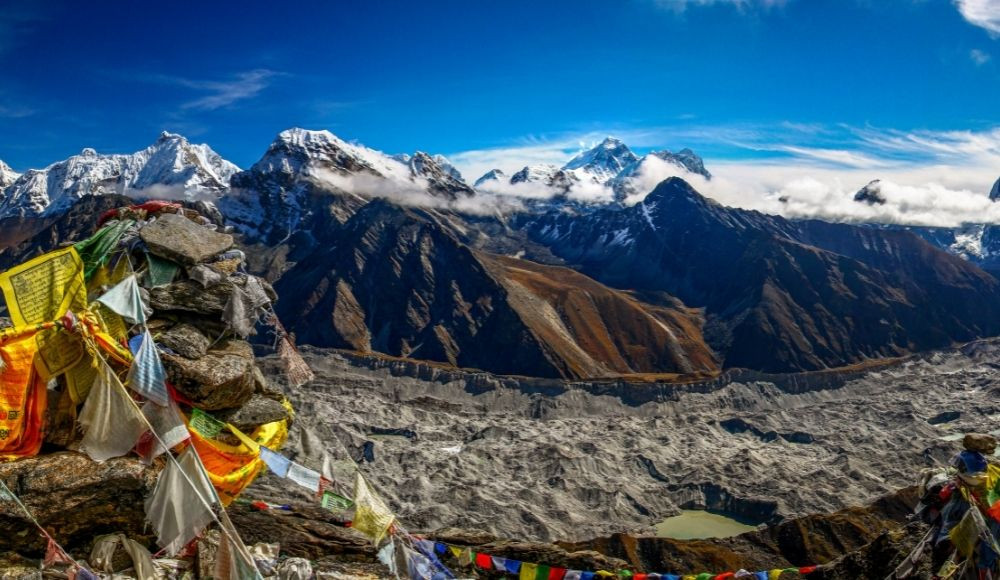
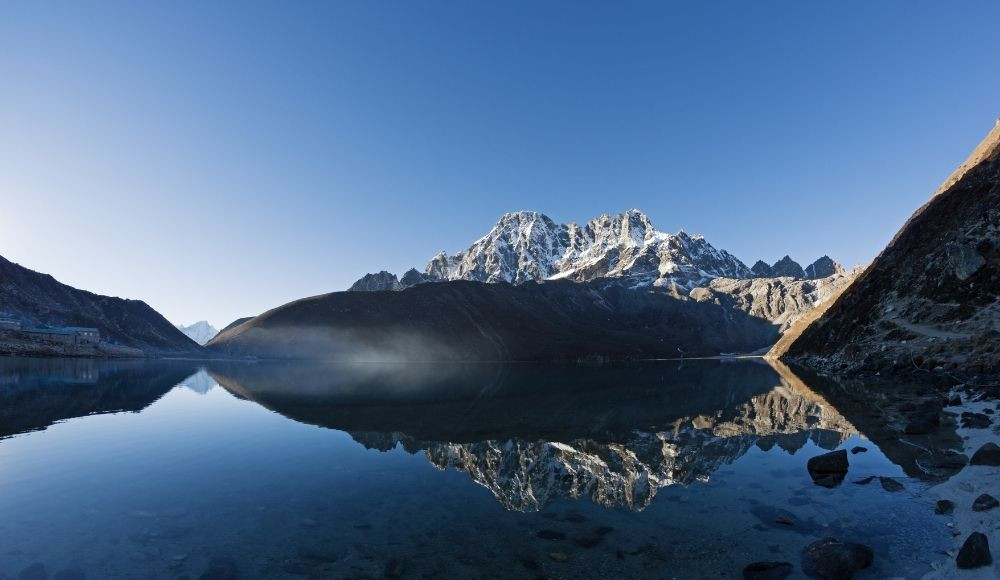
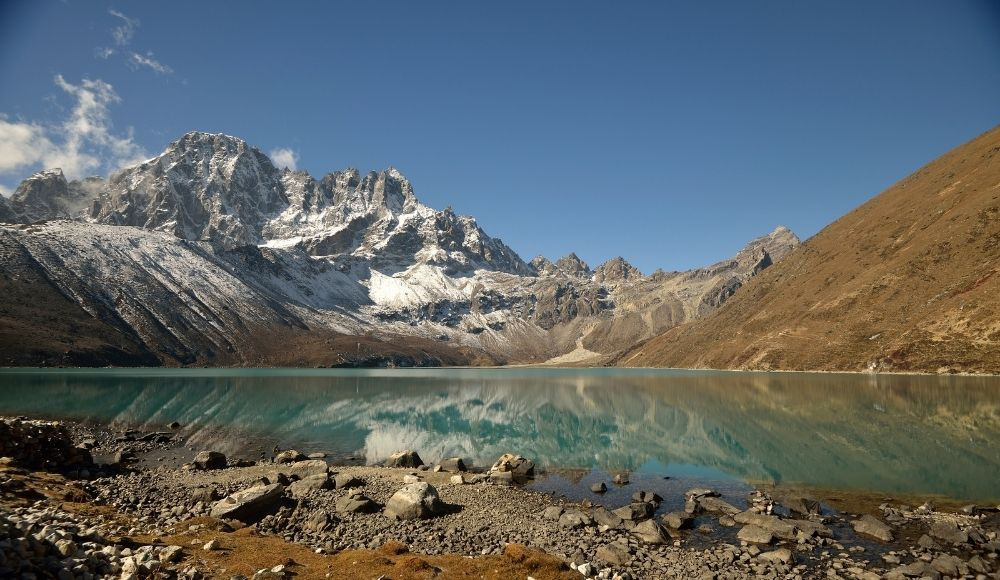

 Duration
14 days
Duration
14 days
 Trip Difficulty
Difficult
Trip Difficulty
Difficult
 Highest Point
5420m
Highest Point
5420m
 Average Group Size
8-12
Average Group Size
8-12
 Trip Code
GVTAH
Trip Code
GVTAH
 Area
Everest Region
Area
Everest Region
 Start Point
Kathmandu
Start Point
Kathmandu
 Trip End Point
Kathmandu
Trip End Point
Kathmandu
 Accomodation
As Mentioned
Accomodation
As Mentioned
 Meals
As Mentioned
Meals
As Mentioned
 Transportation
On Private Basis
Transportation
On Private Basis
 10 KM
10 KM
 1350m
1350m
 4380m
4380m
 Send an email
Send an email +9779823000055
+9779823000055 +9779823000055
+9779823000055